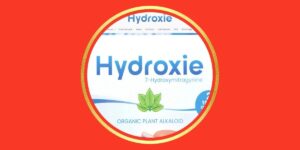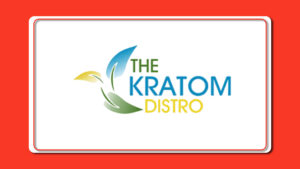The last two months have been quite challenging for 7-OH businesses and consumers. Following the FDA’s recommendation for restrictions on 7-OH and a press release by HHS, people are searching for every aspect of this and are mostly asking about a realistic timeline for 7-OH regulation to prepare themselves for the upcoming changes.
The US government is swiftly restricting 7-hydroxymitragynine. 7-OH is a potent alkaloid found in kratom. It is known to provide pain relief and relaxation. 7-hydroxymitragynine is found in minor quantities in kratom. However, it is also sold separately in concentrated form (shots, gummies, and vapes), which has led to FDA restrictions.
Based on the latest regulatory developments and historical reference of the DEA scheduling process, we have curated this article so that consumers and businesses know what to expect and how to prepare.
Featured Reading:
FDA’s Crackdown on 7-OH: What It Means for Consumers and Businesses
Current Regulatory Timeline (2025–2026)
1. DEA Proposes Scheduling Rule (September–October 2025)
The Drug Enforcement Administration will review the FDA recommendation to restrict 7-OH and classify it as a controlled substance, mainly in “Schedule I”. Heroine and LSD are part of “Schedule I” drugs.
A notice of proposed rulemaking making NPRM will be published in the Federal Register explaining the DEA’s intent behind this decision. This process will approximately happen between September and October 2025.
2. Public Comment Period (November–December 2025)
Between November and December 2025, stakeholders, including vendors, researchers, and consumers, will have 30 to 60 days to submit their comments, favor or against the restriction of 7-hydroxymitragynine.
This public comment period also shows the industry pushback. In the United States, there are multiple kratom advocacy groups, like AKA (American Kratom Association), which may cause delays or exemptions.
We have also added the AKA stance on this decision later in this article.
3. Final Rule Implementation (January–March 2026)
After the closing of public comments, the DEA will issue a final ruling on the implementation of the FDA restriction of 7-hydroxymitragynine. If the proposal of the FDA is approved, all sales and manufacturing will be federally illegal by Q1 2026. Possession of 7-OH products will also become illegal, and heavy fines will be imposed.
What is AKA’s Response to the FDA 7OH Action?
(AKA) The American Kratom Association is an advocacy group that prevents harmful kratom products with contaminants from reaching consumers. It also ensures standardised manufacturing for consistency and safety.
AKA response towards 7-OH restriction is quite straightforward. Senior fellow on public policy for the American Kratom Association, Mac Haddow said, “7-hydroxymitragynine products are not kratom, they are chemically altered substances that are highly potent and provide opioid-like effects.” He also added that this move by the FDA shows their sincerity for the American public’s health.
They also have applauded Secretary Robert Kennedy and FDA Commissioner Dr. Marty Makary for their bold decision regarding 7-hydroxymitragynine sellers.
People are having mixed reactions to this statement by AKA. They are astonished and asking if 7-OH is unsafe and harmful to an extent, causing more restrictions, so why spare raw kratom? As we all know, 7-OH is a kratom’s most potent alkaloid. AKA has uplifted his hands over this matter. Some say that they are trying to protect kratom, as people fear that the FDA might go after kratom soon.
About KCPA:
KCPA stands for Kratom Consumer Protection Act, which protects the production, sale, and labeling of kratom products in all forms (capsules, tablets, extracts, powder, etc). It was introduced by (American Kratom Association (AKA).
KCPA ensures the quality of the kratom that consumers receive. It counters misinformation about kratom side effects and risks.
Before KCPA, kratom was largely unregulated, leading to multiple issues that became the reason for the kratom ban in various places. These laws prohibit dangerous adulterants, mislabelled potency, and underage sales.
Consumers and businesses are looking towards AKA to save 7-OH products.
What does this mean for businesses?
1. Immediate Risks
The FDA has sent warning letters to various sellers due to 7-OH products such as gummies, shots, and extracts. This recent decision may cause state-level bans. Alabama and Arkansas already prohibit kratom alkaloids.
2. Preparing for the Ban
To avoid major loss, all sellers should phase out the 7-OH products inventory. To continue business operations, they should reformulate products by using raw extracts or non-scheduled alkaloids such as mitragynine. Businesses should also consult attorneys to review state and federal laws and discuss legal contingency plans.
Historical Context: How Fast Does the DEA Act?
In 2016, the DEA intended to schedule kratom but withdrew its operations after public outcry.
If we check the historical context, the DEA took 18+ months to schedule CBD/THC. But, in the case of 7-OH, the timeline seems fast and accelerated due to the FDA and DEA being on the same page.
Key Unknowns
1. Will natural kratom be affected?
The FDA said the natural kratom will not be affected, but businesses are concerned about “extract creep” regulation.
2. What will be the enforcement intensity?
The DEA will catch the bigger fish first, which means prioritizing large distributors over small retailers.
Bottom Line
According to the realistic timeline, businesses have 6 to 9 months before a likely 7-OH ban. To survive the hard wave, businesses should diversify their product range and join advocacy efforts.
Potential Timeline:
Proposed Rule: September–October 2025
Public Comments Close: November–December 2025
Final Ban: January–March 2026 (if no delays)
Also, see:

































